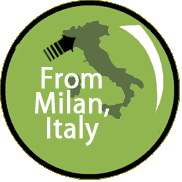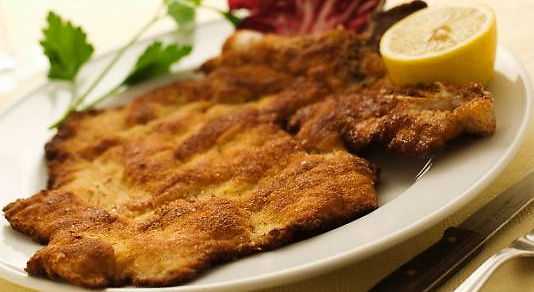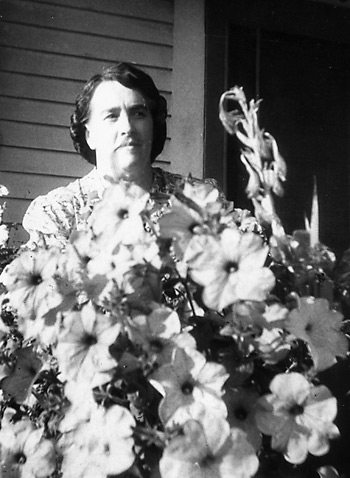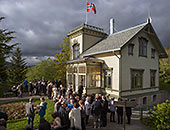 |
 |
|
 |
 |
|
|
Costolette
di Vittelo Milanese:
Veal Chops Milan-Style by Ed Boitano
Though oftentimes confused with Wiener Schnitzel (cutlets Vienna-style) - and in some kitchens almost identical - Costolette di Vittelo Milanese is considered a dish brought from Milan to Vienna by Marshal Radetzky in 1857. Another version is that it was simply passed on to the Viennese as a result of one and a half centuries of Austrian rule. Still further proof that it is indeed a Milanese invention is a menu written in 1134 AD, which included “lumbulos cum panitio” - sliced loin in bread crumbs, in the list of dishes offered by the abbot of the Saint Ambrose monastery in Milan. I invite our readers to provide evidence to the contrary that Costolette di Vittelo Milanese is not a precursor to Wiener Schnitzel. Whatever your opinion: Costolette di Vittelo Milanese is an easy dish to prepare and best served immediately. For those with a disdain for veal products, pounded chicken breasts can be substituted. Ingredients:
Pound veal chops lightly. Combine breadcrumbs and Parmesan cheese in a small bowl. Spread on foil. Beat eggs in a medium bowl. Dip pounded veal in beaten eggs, then coat with breadcrumb and cheese mixture. Press mixture onto veal with the palms of your hands. Let coated veal stand for 10 to 15 minutes. Melt butter in a large skillet. When butter foams, add veal. Cook over medium heat for 4 to 5 minutes on each side or until veal has a golden-brown crust. Drain on paper towels. Transfer to a warm platter. Garnish with lemon slices. Serve immediately. Makes 6 servings.
|
Hi Audrey, Love your lamb shanks. --- Paul, Scottsdale AZ
Haven't been called Tad for . . .gee, maybe I've NEVER been called Tad . . . guess I'm the only one with chutzpah enough to mention Bourdain. BRILLIANT? --- Ken, Shutesbury, MA
I think we must have had an entirely different experience in the UK. (Fresh Food and Real Ale – week 1). We were up in Edinburgh and they served something called ‘Neeps & Tatties.’ The items were boiled so long that I couldn’t even recognize what I was eating. Come to think of it… I couldn’t taste them either. Later I found that Neeps’ are Turnips and ‘Tatties’ are potatoes. --- Lindy, Phoenix, AZ
My mouth was watering as I read some of your descriptions of the fantastic fare of ... England? I had always felt smug about the lowly reputation of British cuisine as this gave us at least one country with a worse culinary reputation than America's. I guess I'll have to change my views. Your article made me actually want to take a CULINARY tour of Britain. Yummy yummy yummy. --- Sandy Miner, Portland, OR Thanks for your note. Thanks to Traveling Boy I get to interview a world famous chef this week who is widely recognized as spearheading the Yummy movement in Ireland. Guess I'll have to take yet another culinary tour a little further north and check it out... (I love my job!) --- Audrey
Very interesting, mouth-watering piece by Audrey! (A McDreamy McMeel). Your web site is fascinating! --- Susie, Victoria, BC
Combining travel, food, and intelligent advice -- BRILLIANT! Your site fills a long-felt need for hungry roamers. Keep it up! It's Anthony Bourdain with reservations and CLASS. --- Tad, Boston, MA
|
|
| |||
This site is designed and maintained by WYNK Marketing. Send all technical issues to: support@wynkmarketing.com

|




















